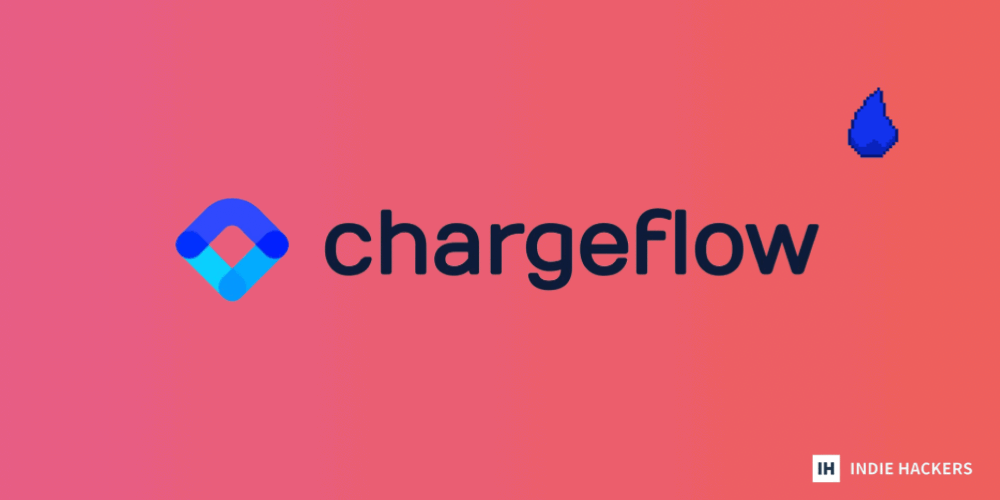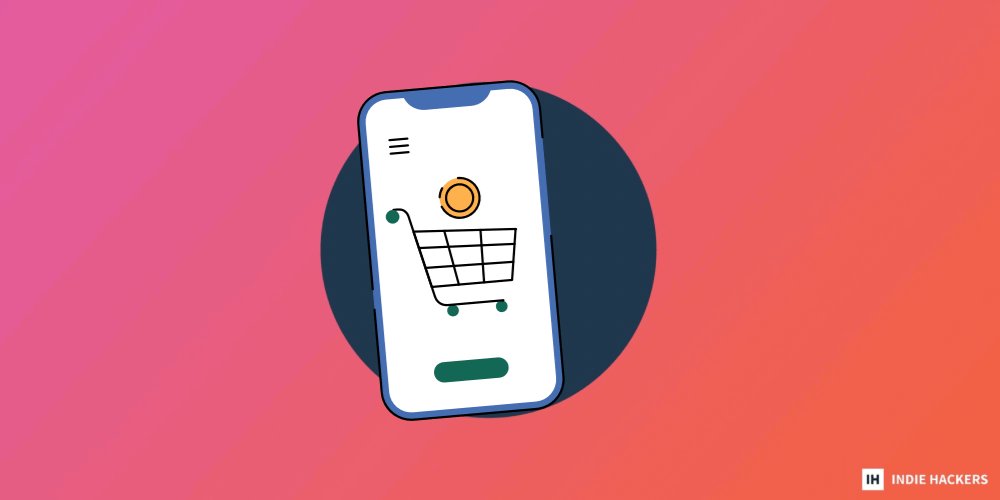|
|
When it comes to lead generation, lead magnets still work well: - **Also, build credibility by hosting** events on social media, add a signup form to your sidebar, and level up your website content. - **Looking to get into e-commerce?** Select a nich
When it comes to lead generation, lead magnets still work well:
-
Also, build credibility by hosting events on social media, add a signup form to your sidebar, and level up your website content.
-
Looking to get into e-commerce? Select a niche, products, and platform, and design your site. Don't cheap out on reliable hosting!
-
First product sold for $10M. Current product is at 9 figures. Gergo Vari has been bootstrapping for 20 years, and says resilience is key.
Want your product seen by over 70,000 founders and businesses? Sponsor an issue of the Indie Hackers newsletter. Choose between 3 affordable tiers that can fit almost any budget.
Lead Generation 101 🗣

by Syed Balkhi
Here are some effective ways to turn visitors into customers!
Publish relevant, interesting content
First things first, make sure you're publishing relevant and interesting content on your website.
Around 71% of shoppers say they read onsite content, like blog posts, before placing an order.
You could write about industry trends, share tips and how-tos, or offer product comparisons. The most important thing is to write about what matters to your target audience, and the challenges they face.
Keep posts short and scannable using headers, lists, and images!
Use lead magnets
A lead magnet is an offer, like an e-book, checklist, or video, that visitors can get in exchange for joining your email list.
The lead magnet you create should resonate with your target audience. For example, an online pet store could offer a lead magnet to help prospective dog owners discover the best dog based on their needs and schedule.
Once people join, automate a welcome email that includes the lead magnet. Welcome emails have an open rate of 82%, so you'll have a better chance of keeping your new subscribers engaged by immediately delivering on your promise.
Then, you can send regular updates, promotions, and resources to keep them interested in your brand.
Create a lead gen landing page
A dedicated landing page is key for converting visitors into leads. Design a page specifically for capturing contact information from people interested in your product or service, keeping your message focused on this one goal.
Add a signup form to your sidebar
Adding a simple signup form to your website's sidebar is another easy and effective way to generate new leads. All you need is a simple contact form that asks for the name and email address of the potential subscriber.
You should also offer an incentive, like a free guide, checklist, coupon, or video series for those who sign up. If you give them a compelling reason to share their information, they're more likely to take action.
Host events on social media
There are a ton of event options to choose from:
-
Host a live Q&A session where people can ask questions about your product or service.
-
Announce a live class where people can show up once a week and learn about something you're good at. This is a great way to build credibility and let your expertise shine.
-
Collaborate with influencers.
-
Host an online giveaway.
Discuss this story.
Prevent Chargebacks With Chargeflow 🚨

This issue is sponsored by Chargeflow
Over the past year, we have seen hundreds of indie hackers dealing with payout holds, chargeback fees, and payment processor suspensions, all due to fraudulent activity in their Stripe accounts.
What’s the best way to prevent this?
Two words: Chargeflow Alerts.
The way it works is simple: Chargeflow gets notified before chargebacks occur (disputed transaction), and takes corrective actions before the dispute evolves into a fullblown chargeback.
It doesn't matter if you're just getting started with your project; it takes only a 0.65% dispute rate for Stripe to move your account to a Visa Monitoring Program. If you receive 1 chargeback out of 100 transactions, you're already at 1%. Better to be safe than have your account suspended!
Install Chargeflow Alerts, and pay only when it actively prevents a chargeback on your behalf.
Install Chargeflow Alerts for 50% off (offer valid until December 31)!
Launching an E-commerce Business 🛍

by Thomas Griffin
Creating an e-commerce store is one of the most efficient ways to start a business in the digital era. If you are a photographer, graphic designer, avid gamer, etc., use your interests to make money online!
1. Choose a niche and find the right products
The more specific you are with respect to your niche selection, the better it will be for your business.
Once you have selected your niche, find the right products to offer. If you will be selling products that you have created, you probably already have a pretty thorough understanding of what your audience likes.
Another option is dropshipping. Here, you list the products you like, and promote them through your website. Once a customer places an order, you notify the manufacturer, then the products are delivered directly to your customer.
Just because you like a particular product doesn't mean that your target audience will prefer buying it from you. Do your research and get acquainted with the preferences of your audience to make the right call.
2. Identify reliable sources
Whether you sell products online through dropshipping, or purchase them in bulk from wholesalers, it's important that you use reliable manufacturers or vendors.
The most important factors are the quality of the products, the price, and the speed of delivery.
3. Find a domain and reliable hosting
Once you have found reliable vendors or manufacturers to source your products, find an appropriate domain. This step can also come earlier in the process, depending on how long it takes you to identify your products.
You need a hosting service to take your product pages live, and make the information available on your website accessible to your audience. Don't cheap out when it comes to a good hosting service! You don't want your customers to face issues and give up.
4. Choose a platform and design your website
Select the best platform for your e-commerce website. You can create a website for your online store from scratch, or leverage the variety of e-commerce platforms available.
No option is right or wrong here. It all depends on what you prefer. When designing your website, the goal is to offer your audience a seamless navigation experience.
5. Integrate payment methods
The last step is adding different payment methods to your website. Add a variety of payment methods, including pay-in-four installment options, for the best results!
Discuss this story.

20 Years as a Bootstrapper 🥾

by James Fleischmann
Just after the dot com bubble burst, Gergo Vari started bootstrapping software products. His first product resulted in a sale for today's equivalent of $10M. Since then, he's built and sold multiple businesses. His most recent is currently at nine figures.
The background
I started working on my first product, Profession, with three friends. We had minimal coding experience and no funds. We only had two computers, so we had to take turns coding. It took us almost four months.
One of the benefits of bootstrapping is the agility of small scale operations. You can quickly adapt to market feedback, and iterate efficiently. Bootstrappers should take advantage of this to maintain a close connection between their products and their customers.
Within four years, we reached an extraordinary market share of 75%. SanomaMedia purchased the company in 2005, and the transaction was the largest of its kind in Hungary up until that time. After the sale, I founded several more companies, including my current company, Lensa, a platform that connects employers with job seekers.
Current company
Lensa is entirely bootstrapped. We started the company with our own capital, and built our revenue streams from the ground up.
We launched in 2015, and had 10M users by 2017. We had 20M users by 2021. We grew quickly due to a combination of innovative technology, marketing tactics, and a deep understanding of the job market.
Our AI and machine learning technology also helped. It allowed us to provide personalized job recommendations for an enhanced user experience. We also strongly emphasized user-centric design.
Our marketing strategies for Lensa were focused on personalization. We utilized data-driven insights to create job alerts that resonated with our job seekers.
Additionally, we developed a strong content strategy, including articles and blogs. And, we engaged in targeted thought leadership and digital PR to build brand awareness, and educate users about the platform.
Lastly, building a community around the job search process, and establishing strategic partnerships, also helped grow Lensa’s reach and credibility.
Advice for indie hackers
-
Successfully integrating AI and machine learning involves defining clear objectives.
-
Building strong relationships within your industry is essential, regardless of the size of your company. Networks and partnerships provide valuable resources, ideas, opportunities, and support.
-
Financial management is crucial. Understand and plan your finances carefully.
-
A strong team that shares your vision can make a big difference.
-
Resilience is key. Expect challenges and learn from them, balancing perseverance with your personal wellbeing.
Discuss this story.
The Tweetmaster's Pick 🐦

by Tweetmaster Flex
I post the tweets indie hackers share the most. Here's today's pick:

Enjoy This Newsletter? 🏁
Forward it to a friend, and let them know they can subscribe here.
Also, you can submit a section for us to include in a future newsletter.
Special thanks to Jay Avery for editing this issue, to Gabriella Federico for the illustrations, and to Syed Balkhi, Darko, Thomas Griffin, and James Fleischmann for contributing posts. —Channing
|
|
Indie Hackers | Stripe | 120 Westlake Avenue N, Seattle, Washington 98109
|
|
You're subscribed to the Indie Hackers Newsletter. Click here to unsubscribe.
|
|
|








